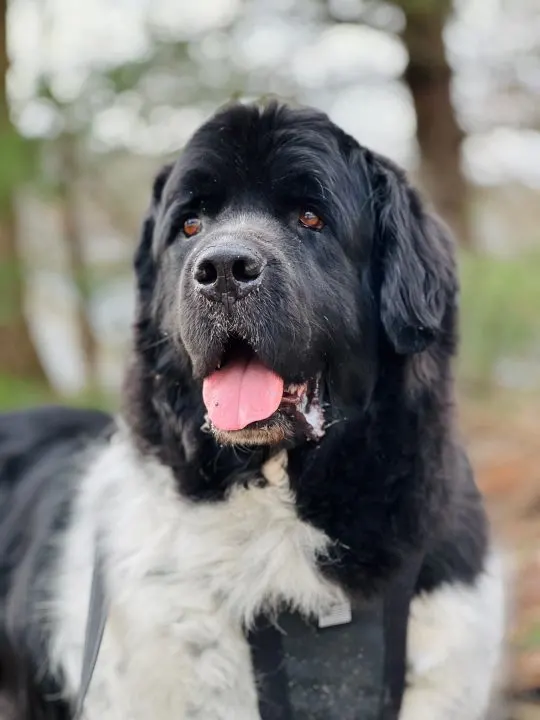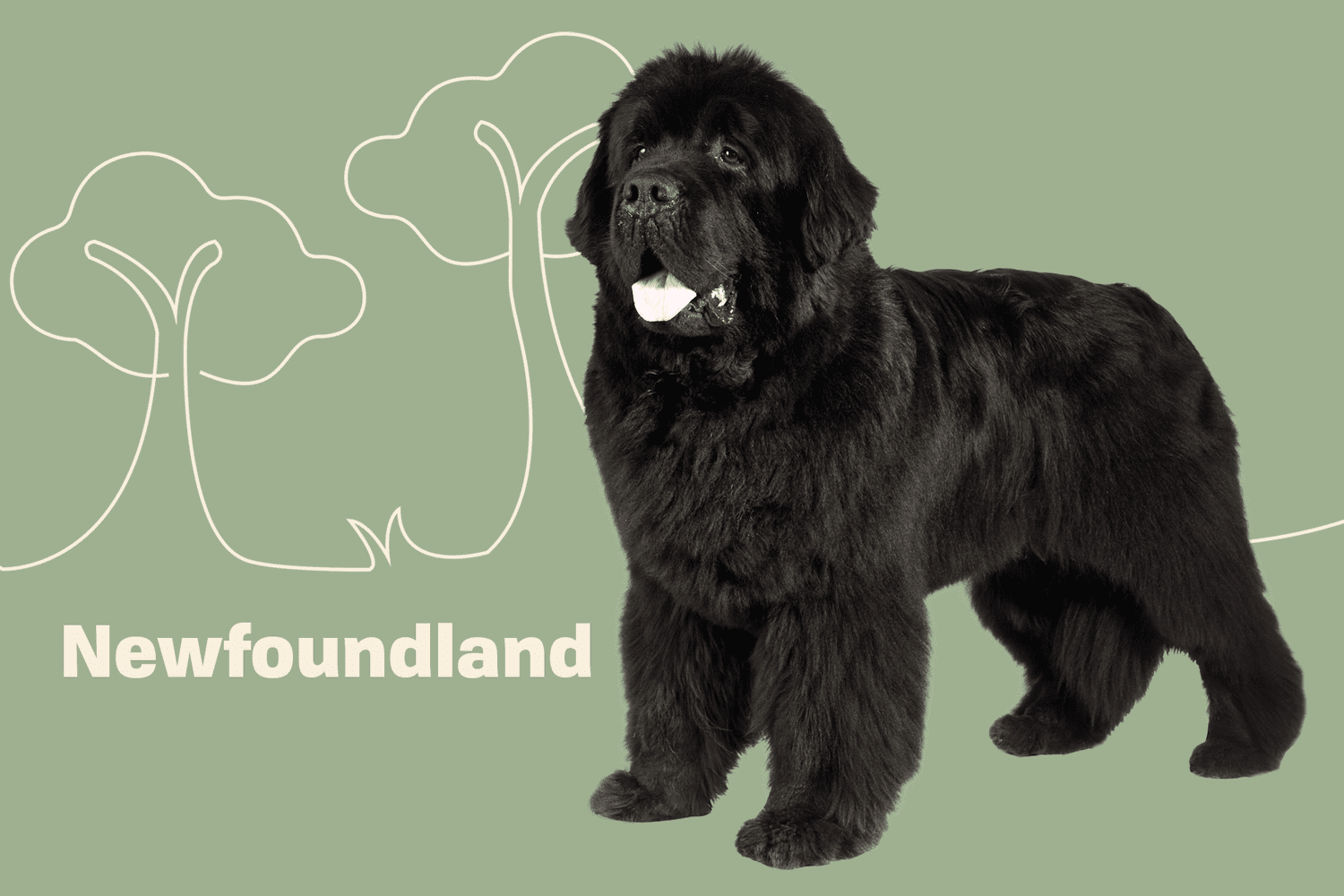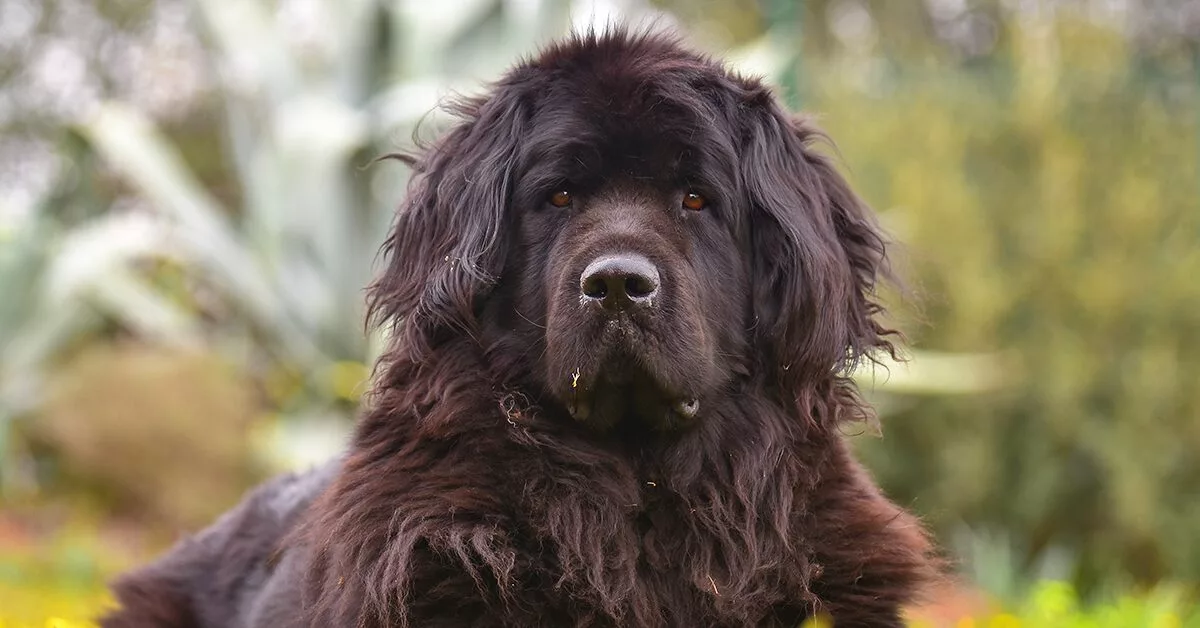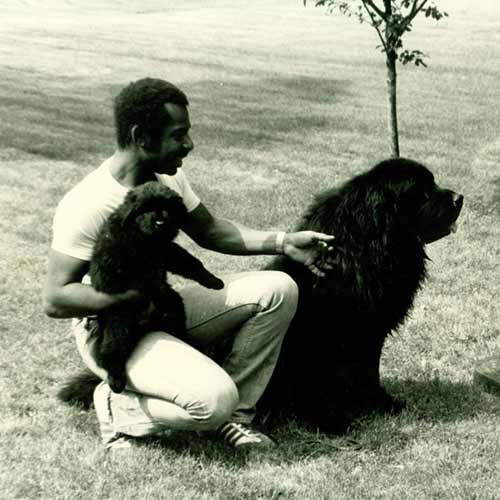The Newfoundland is a giant breed of dog that is known for being gentle, intelligent, and eager to please. Originally from Newfoundland, Canada, these dogs have a long history of serving as loyal companions and workers, especially in water-based tasks. Read on to learn all about the history, temperament, appearance, health, care and more regarding these magnificent gentle giants.
History of the Newfoundland

The origins of the Newfoundland breed can be traced back to the Canadian province after which they are named, Newfoundland and Labrador. The breed is thought to be descended from a variety of large dogs brought to the region by European settlers and visitors.
- Mastiff Influence – Some of the foundation stock likely included the Tibetan Mastiff and other working Mastiff breeds. This gave the Newfoundland its large size and solid build.
- Water Dog Breed Influences – Local water dogs, including the now extinct St. John’s Water Dog, were bred with the Mastiffs. These dogs passed on traits like webbed feet, a water resistant coat, and an affinity for water.
- Working Roles – The mix of Mastiff and water dogs produced a powerful but docile breed that was well suited for helping fishermen. Specific tasks included hauling lines and nets, retrieving items from the water, and most famously, rescuing people from drowning.
So in summary, the Newfoundland developed as a blend of breeds brought over by early settlers to serve as a strong and adept working dog for water-based jobs in the frigid environments of Newfoundland.
Appearance of the Newfoundland

The Newfoundland is a giant dog breed, with the following distinguishing physical traits:
- Size – Males stand 28 inches tall on average and can weigh from 140 to 175 pounds. Females are slightly smaller at 26 inches tall and 100 to 150 pounds.
- Coat – Newfoundlands have a thick, dense double coat to protect them from cold water. The outer guard coat is coarse while the undercoat is soft for insulation. Common coat colors are black, brown, gray and white/black (Landseer).
- Head – They have a broad skull and heavy muzzle with some stop. The head is proportional to the large body and features a sweet, expressive face.
- Body – Powerful and heavily boned while still agile enough for swimming. They have webbed feet for aquatic work.
So in appearance, the Newfoundland is a very large and sturdy dog with striking good looks reflective of its mastiff and water dog ancestry.
Temperament of the Newfoundland

What has made Newfoundlands such outstanding companions and workers is their renowned gentle temperament:
- Patience – This breed is extremely patient thanks to their working history waiting quietly for hours alongside fishermen. They are gentle with children and tolerant of poking and prodding.
- Friendliness – Confident, social and outgoing by nature. They form strong attachments and get along well with all people and animals when properly socialized.
- Trainability – Eager to please and responsive to positive methods. Their intelligence allows them to learn quickly although they can be independent at times.
- Protectiveness – Newfoundlands feel a responsibility to watch over children and protect their families. Their protective instincts are tempered with friendliness towards strangers.
So the Newfoundland has a trustworthy, people-oriented temperament that has enabled the breed to serve in so many capacities from family pet to therapy dog.
Care and Training of the Newfoundland

While big in stature, Newfoundlands have modest care and training requirements:
- Grooming – The water resistant double coat needs weekly brushing to control shedding and prevent matting. Occasional bathing when dirty.
- Exercise – Newfoundlands need a long daily leash walk and enjoy activities like hiking and swimming that exercise both body and mind. Access to a yard is ideal.
- Training Tips – Training should start early and use positive reinforcement techniques. Have patience, be firm and consistent. Their aim to please makes Newfoundlands very responsive to food rewards, praise and affection.
- Socialization – Extensive socialization to people, animals, places, and experiences from an early age is essential for raising a confident and friendly Newfoundland. Sign up for puppy preschool.
So Newfoundlands do require regular grooming and opportunities for activity, but they pick up on training quickly and mostly just need ample attention and interaction from their families.
Health of the Newfoundland
Luckily the Newfoundland is not plagued with many health issues outside of the usual large breed concerns:
- Bloat – Their deep chests put them at risk for this life threatening condition related to digestion and air intake. Feeding several smaller meals can help prevent bloat.
- Orthopedic Issues – Hip and elbow dysplasia are two common joint problems. Good nutrition plus avoiding excess exercise during growth can reduce chances.
- Heart Disease – Subvalvular aortic stenosis (SAS) has been identified in some lines. Reputable breeders screen breeding dogs.
With proper nutrition, exercise, routine vet care, and health screening from reputable breeders, the Newfoundland can live a relatively healthy life of 8 to 10 years.
Finding a Newfoundland Puppy
Here is a checklist for finding and bringing home a Newfoundland puppy:
- Find Breed Clubs – Connect with national and regional Newfie breed clubs to educate yourself and find reputable breeders.
- Questions for Breeders – Interview potential breeders about parent health testing, puppy raising protocols, etc. Visit their breeding facility if possible.
- Supplies Needed – Stock up on food, bowls, bed, leash, etc. Puppy-proof your home from hazards and limit access until fully housetrained.
- First Vet Trip – Take your new pup to the vet within a couple days for a wellness exam, vaccines, deworming and introducing your puppy to the vet staff.
Do your due diligence researching breeders and prepare in advance for the wonderful but substantial commitment of bringing home a Newfie pup!
Conclusion
In summary, the Newfoundland is a noble working breed that found its niche assisting fishermen off the Canadian island after which the breed is named. Their Mastiff foundation and local water dog influence produced a canine jack-of-all-trades that excels in water work but also drafting, therapy, search and rescue and of course being a loyal giant companion. Patient, intelligent and sweet-tempered, the Newfoundland has plenty to offer the right owner. Those willing and able to commit to this big breed will find a delightful friend for life.